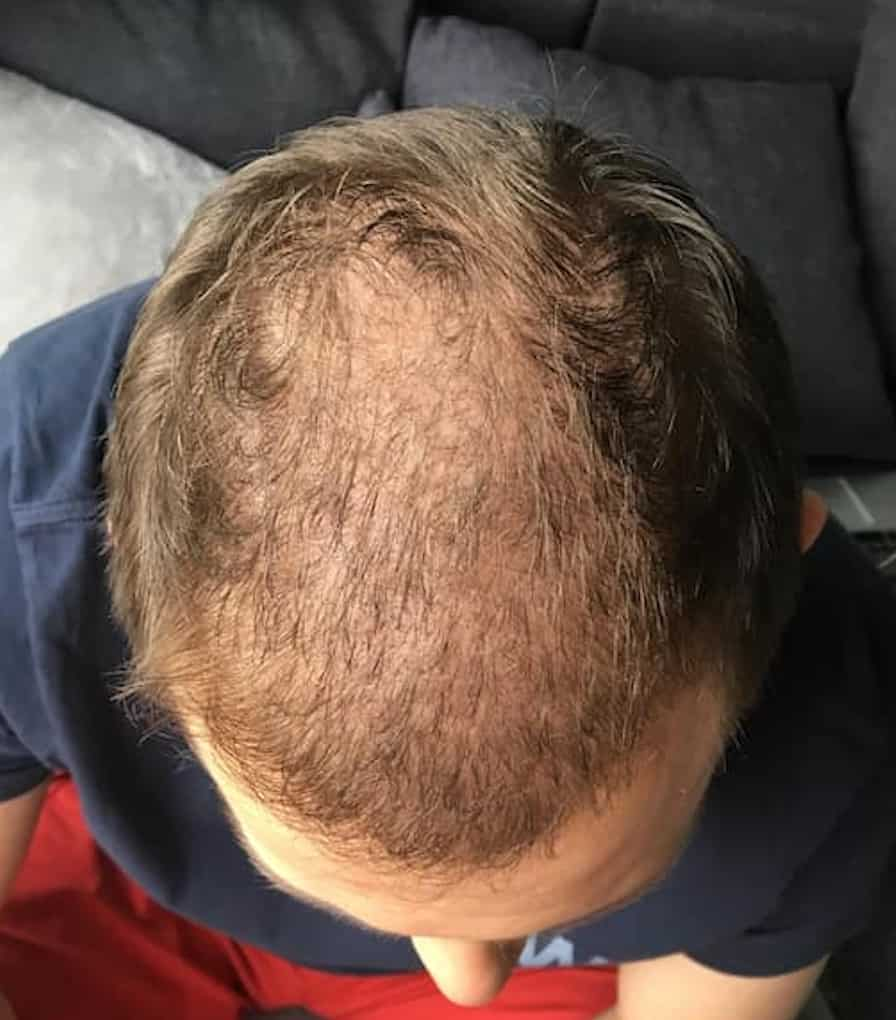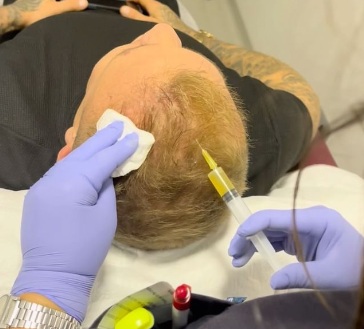Many people who decide to get hair transplant surgery think that that’s going to bring an end to all their hair loss problems. And it’s certainly the case for a lot of the people who are highly satisfied with the results. However, there are others who are not happy with their hair transplant results because of one reason or another.
This is especially distressing as a hair transplant is usually thought of as the last and final resort. If this doesn’t work out, what else will? In order to avoid getting yourself into this situation, it’s important that you understand what can cause this problem in the first place. And if you have ended up at this point, what should be your course of action?
The failure of a hair transplant surgery can have many reasons. However, these affect the patient or come into play even before the patient has gotten the surgery, like the choice of clinic, surgeon, poor communication, etc.
If you’re unhappy with your hair transplant results after all’s said and done, there may be some other factors that you need to take into consideration. And it’s best to know about them before having the surgery at all so that you can avoid it.
Reasons Why You’re Not Happy With Your Hair Transplant Results
There are a few reasons why this may be the case with you. Let’s take a look at them.
Unrealistic Expectations
This can commonly lead to dissatisfaction with the results of a hair transplant surgery. The bigger the difference between imagination and reality, the more the disappointment.
It’s important that before the surgery takes place, you clearly communicate its goals and the result that you’re expecting. Here, it’s the surgeon’s responsibility to make sure to let you know what can and cannot be achieved.

There are many surgeons who end up making big promises like you’ll have thick, dense hair after the surgery, even when that’s not possible. To avoid this, you should make sure to do your research.
For many patients, just having natural coverage of the bald spots is the goal of the surgery. However, others don’t want just that; they also want to make sure that their hair density is high after the restoration.
This may not always be possible. If the surgeon finds that your donor area doesn’t have enough hair, it’s unlikely that you can achieve high hair density.
This can also depend on hair type as well as the stage of hair loss. That’s when realistic expectations need to be developed in the patient. And it’s important that the patient keeps these things in mind when they’re waiting for the results of the surgery.
Surgical Failure
Another reason why you’re not happy with your hair transplant may be this. Many people assume that this may be the only reason for their poor results.
While that may be the case, it’s also true that how well you take care of your scalp after the surgery determines the kind of results you can achieve.

In order to ensure that the surgery is a success, surgeons provide aftercare instructions to the patients before they come in for the surgery and after they leave the clinic.
Both times, you have to make sure that you’re following them. If not, you need to be completely honest with the surgeon so that they can help just in time, if it’s possible.
Failure to do so can result in a scenario where you’re unhappy with the results. Keep in mind that this kind of reasoning can involve failure on the part of the patient, surgeon, or both.
Be Patient To See The Results
It is important that patients do not panic and think they have had a bad hair transplant just because their results are not according to the timeline that they have been reading about online. Hair growth cycles can vary between patients.
How your hair reacts to the shock of the surgery may be different from how another patient’s hair reacts. You may notice hair growth a month or so later than another patient. However, that’s not indicative of anything bad happening.

Initially, you’ll also notice patchy hair growth. This doesn’t mean that your hair will grow in certain areas and not in others. It’s just your natural hair growth cycle at work.
This is definitely not the final result of the surgery, and you shouldn’t assume it to be either. Of course, if that’s how your hair is going to grow, you’re bound to feel unhappy with it. But the final results can take anywhere between 12-18 months to show.
In addition, the texture and thickness of your hair might also be different. You may notice the growth of softer, thinner hair. Again, this is temporary. Normal hair growth can take months, and you need to give it time.
What To Can Do If You’re Not Happy With Your Hair Transplants?
Depending on the reason why you’re not happy with the results of your transplant, you can do the following to achieve the look that you want.
Get A Second Hair Transplant Surgery
If the patients are likely to continue losing their hair even after getting the hair transplant, the surgeon will inform them about that happening before the surgery takes place. This usually helps in avoiding a situation where a person develops unrealistic expectations from the surgery.
You may be recommended to get a second hair transplant if you would like to achieve an even higher density in the balding regions, have a very large balding area, or are simply not satisfied with the results of the first surgery.

However, keep in mind that this is not always possible for every patient. Your surgeon will need to evaluate your suitability before recommending another hair transplant surgery to you.
PRP Therapy
Low hair density may be one of the main reasons why many patients end up dissatisfied with their hair transplants.
If you’ve been told before the surgery that high density wouldn’t be possible for you through it, you may be recommended PRP therapy.

It’s simple enough, where the blood of the patient is taken and put into a centrifuge to obtain a platelet-rich plasma concentrate.
Not only does it speed up the recovery process, but also helps improve the overall hair density in the donor and recipient areas.
Scalp Micropigmentation
Also known as a hair tattoo, this is when a practitioner fills up the bald patches in your scalp with a custom pigment that resembles your natural hair follicles.

The depth and angle of these are controlled in order to ensure more natural-looking results. If high density cannot be achieved, scalp micropigmentation can give the illusion of fuller, denser hair.
Revision Surgery
This can take place after the first hair transplant has been botched by the surgeon. You should know that your hair transplant surgeon will have malpractice insurance. Therefore, if malpractice is involved, the clinic’s warranty will cover it.
That means that you won’t have to pay the fees for the surgery. However, this is only applicable in those cases where the surgery has yielded poor results because of the surgeon.
If you’re not happy with your hair transplant results because you didn’t follow the aftercare instructions of the surgeon, like smoking, drinking alcohol, or avoiding scalp massages, you will not be eligible for free revision surgery. That’s because the poor results were not because of the clinic but because of the patient.
Before Making Your Decision, Wait For the Results
After the complete recovery period, patients are able to see their final results. Anything before that shouldn’t make you think that the surgery has failed; that’s because your hair is still growing. It might even be shed because of shock loss, which is completely normal and nothing to worry about.
Still, many patients are not clear on the recovery timeline, which is why they may end up thinking the worst. A few months into the recovery is still too early to declare whether your hair transplant has failed. You’ll be asked to share pictures of your scalp as you’re recovering.
This will only help you as the surgeon will assess them to make sure that there is nothing wrong with your scalp. If you’re still not happy with the hair transplant results, you should reach out to the surgeon to discuss your treatment options.
Concluding Remarks
There are different reasons that can make you feel unhappy with the hair transplant results. However, not all of them are because of the surgeon. It’s also the patient’s responsibility to keep in mind what can be achieved from the surgery.
Of course, your surgeon will inform you about it. It’s not possible for everyone to have a high density. In addition, you need to be patient before coming to the conclusion that your hair transplant hasn’t been successful. It can take more than a year for you to see the final results.
If you’re still not happy, there are different treatment options available like a second hair transplant, revision surgery, scalp micropigmentation or PRP therapy.



